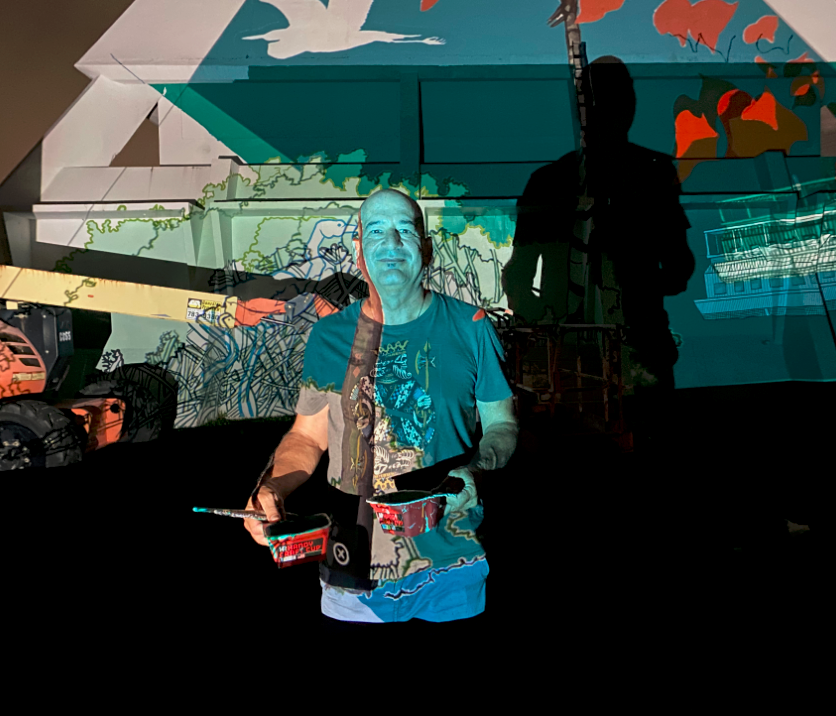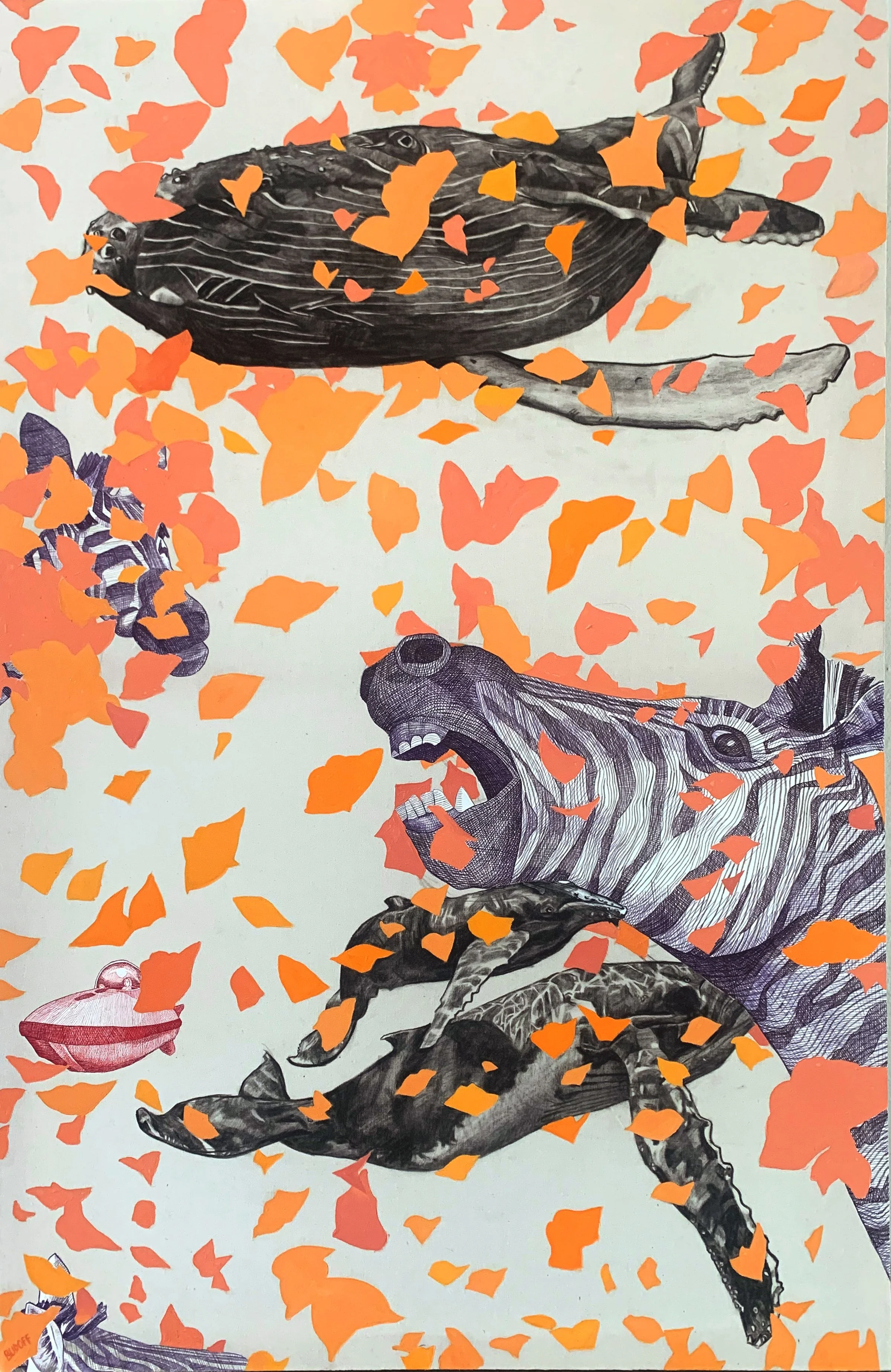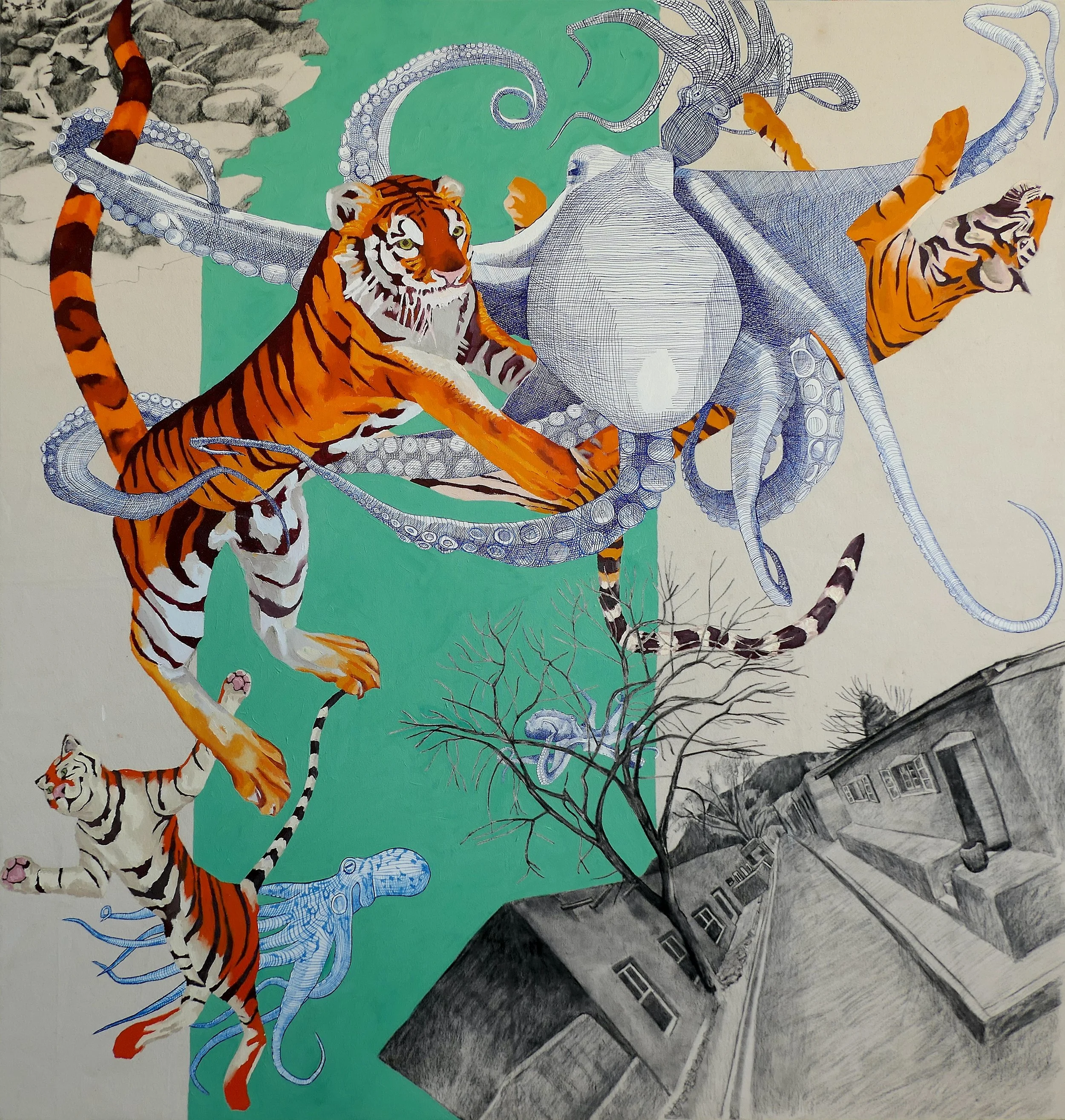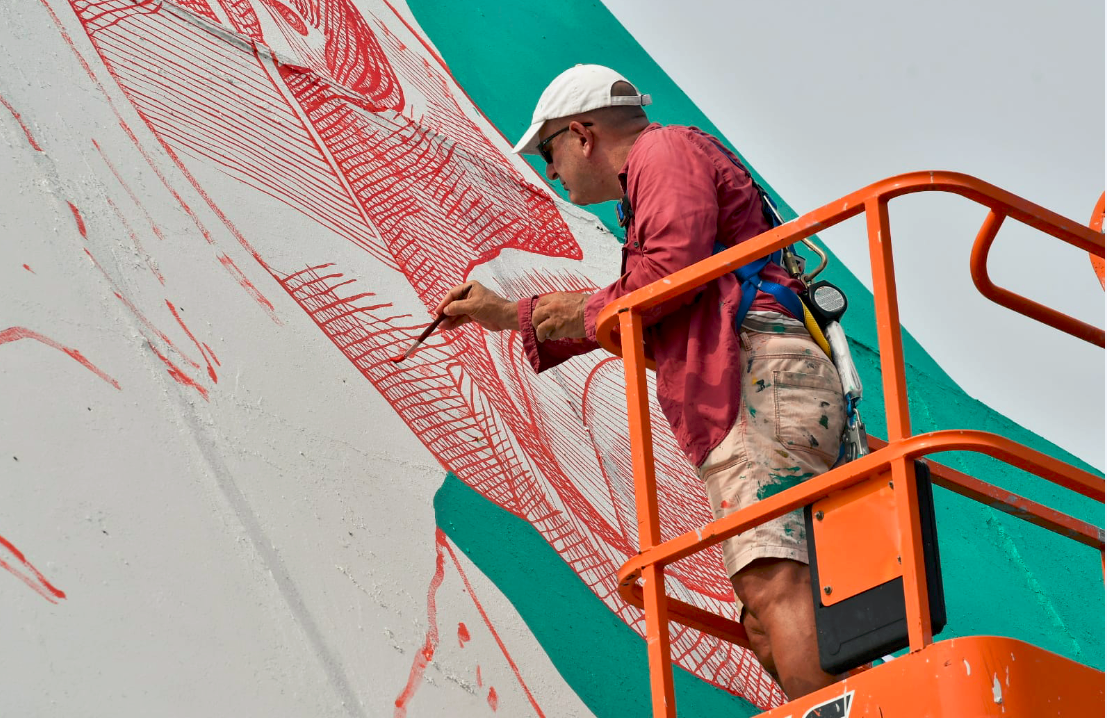Interview with Nathan Budoff

“... my project is less one of conservation, of trying to separate and freeze natural areas in a past time, than one of recognition and appreciation; it is essential to increase awareness and sensitivity so that we all feel integrally bound to one another, and as people assume responsibility for causing as little damage as possible to the other creatures around us, and even try to increase our interaction and joy.”
Tell us about how you decided to become an artist
I was one of those kids who was good at drawing as a young boy—other kids would come to me to draw things for them, but it wasn’t a big deal to me, I enjoyed reading and writing about things; I was really excited about archaeology, and life on the ocean shore. It was towards the end of high school that I took some art courses such as drawing, painting and especially serigraphy, that ignited my interest in a more serious way. I convinced my father to let me go to art school for a year, and then, even though I went to the University of Massachusetts, a broader university rather than an art school, I was committed to being an artist. There are times, maybe every month, when I still question this decision—I think this keeps my process vital— and I have done other things, and had professional positions outside of art, luckily, but artmaking is at the heart of my life; it is the space where I am grounded in the moment. It is the space where I find myself and encounter challenges and questions, small specific tasks and large revolutionary possibilities.
What influences you the most when you are in the process of creating new artwork?
My recent pieces start with observation or vision; that is, I see a dramatic tree, a bird navigating the nearby area, manatees swimming in the lagoon. Or an image appears in my mind: the head of a giraffe surrounded by a school of fish, a whale dancing with a wasp. For me, this almost magical, mystical source of each work is at the heart of it. These sources, and each of these instances is a spark, an instigation; It is essential that this sense of surprise and wonder is at the root of the process, and becomes the heart of each of these pieces. Subsequent developments, creative innovations, the urges to experiment and invent are equally exciting, in their quiet internal way. At the same time all of these works are informed by research, by reading about the world around us, about the creatures and beings and about their particularities and capacities. This process of learning deepens my interest, and marks how I develop the characters in my work. Because the work is deeply integrated with my interests and
curiosities, reading about the cultural life of whales and dolphins, about the social life of elephants, about the interconnected life of trees, enriches both my thinking and my art practice. (It is the extraordinary work of those who spend years living with these creatures, observing their societies, meeting and observing them and writing about those experiences, that allow me to draw closer to the creatures and to appreciate our similarity and our unity of purpose and joy.
Which artists have most inspired and influenced you?
Early in my studies, I spent hours in the Boston Museum of Fine Arts and visited the New York Museums, and I carry with me these artists whose work I loved and studied closely at different moments in my life: Monet, Pissarro, Kokoschka, Gabriella Münter, Velazquez, Georgia O'Keeffe, Picasso, Hieronymous Bosch and Goya principal among them. It is one of the blessings and curses of the painter to draw from a rich tradition of masters, with their extraordinary visions and their limitations. I discovered the work of Philip Guston a few years later, and it has fascinated me, both his late work and his whole artistic trajectory, since graduate school, for thirty years.
In recent years I have been intrigued and influenced by particular aspects of the work of several painters whose general trajectory is not necessarily my favorite. I have looked closely at Fragonard’s work, particularly his Progress of Love series, for the way he portrays nature, his very vital and almost anthropomorphic representation of the foliage. I also have spent hours drawing details from Pietro da Cortona’s Allegory of Divine Providence, the enormous and masterful ceiling mural in the Palazzo Barberini, with its use of sotto in sú.
In a broader sense there are a few artists I really admire and aspire to somehow approximate in their energy and diversity. Niki de Saint Phalle is foremost among them, also Kara Walker, Francesco Clemente, and to a lesser degree Neo Rauch. There is a point that integrates playfulness and serious criticism in the content of their work, and also a fluidity of media, an involvement with the materials and their qualities, that allows each of them to stretch their work into unexpected formats.
Nathan Budoff, Reach and Tooth, 2021
What was, or is an artwork you especially enjoyed creating and why?
I really enjoy the invention, that process of thinking about all of the possibilities, the things that can be added or subtracted from a piece, the way they can be managed and altered. At the same time, that is somehow balanced by the odd pleasure I take in the painstaking making of a piece; the time and care invested, and the meticulous process of rendering a certain element in ink or paint is somehow time won back from the ether.
I think these different ingredients are part of what made “Reach and Tooth” fun and exciting to make. I started with the landscape, drawn on the lower right.
This is a version of the street in Santa Fe where my mother lived, made a little narrower and more cramped. I then knew that I wanted that large octopus in the sky—He should be unreal, arrogant, and detailed, and his arms should echo the gestures of the tree branches in the landscape. I added other octopuses, and tigers dancing with them; each of these tigers and elephants was made with care, with an attention to their personality and mood.
Your work includes environmental references - tell us about how this became a focus and why
Like so many people, I have read and been witness to the increasing chaos in our environment. Since I was a boy, I have enjoyed hiking in the woods and being outdoors in general, and I remember being fascinated by the complex patterns of root formation among some trees in the New Hampshire woods.
Still, it was about ten years ago that I really became more focused on environmental references, and it springs more from an appreciation of the beauty of the natural world than an intellectual idea. I was so struck by a group of centenary trees on the campus of the University of Puerto Rico. One of the extraordinary qualities of these large, old tropical trees is that they are covered with other plants, with other creatures. As I drew them, I had to visually locate each of these different species and see how they wound around the trunk and related to one another as well. I think that was a key moment in the growth of environmental imagery in my work. I looked to other historical painters and became enamored of Fragonard’s work in the Frick Collection. As I worked from his portrayal of fauna, I gradually filled my paintings and drawings with other trees and animals, since then they have continued to propagate.
I have tried to keep the idea of interrelatedness at the heart of my environmental references, that is the understanding that all living beings are neighbors or cousins, all of us are living together and form part of this envelope of life. In this sense, my project is less one of conservation, of trying to separate and freeze natural areas in a past time, than one of recognition and appreciation; it is essential to increase awareness and sensitivity so that we all feel integrally bound to one another, and as people assume responsibility for causing as little damage as possible to the other creatures around us, and even try to increase our interaction and joy.
you often work as a muralist; how do you approach these public projects?
I have worked on several public art projects, and each one is a little different. The most recent one in Cataño, Puerto Rico was based on a series of workshops with the local population. I met with community leaders, and in different sessions we addressed different aspects of their memories of Cataño. They told me stories of the city and summarized the history of their neighborhoods; they described the wildlife and the natural environment of the area. With that information in mind, I developed the designs and then projected these onto the sides of the building, a forty-foot-high pyramid. From there I used a crane to move around the building and around each facade, gradually painting color and detail into each element. Each element was something new and different at that scale, not to mention that I learned to drive a lift in the process!
Do you have a dream project? What might that be?
I have so many aspirations in my work, to make things that are meaningful and communicate with people. When I imagine a dream project it is the opportunity to make something large and evocative, in a public context, with considerable public interaction. It could be a major exhibition that would both present my recent and upcoming work, or it could be a project in a space that people find accessible and even move through as part of their daily lives—a large train station, a commercial hub, maybe a museum lobby. Workshops and collaborative activities would be integrated into this context. In this way the piece or exhibition would influence the visitors and participants, would speak to them, and they would also integrate some of their own perceptions and reactions back into the artwork. I can think of a number of possible locations in New York, as well as in other cities, and ideally it would become a triggering point of encounter, in a good way, triggering introspection, reevaluation, and a multitude of subsequent creations by other creators, that could move this stuck culture forward to a healthier more sympathetic way of life.









